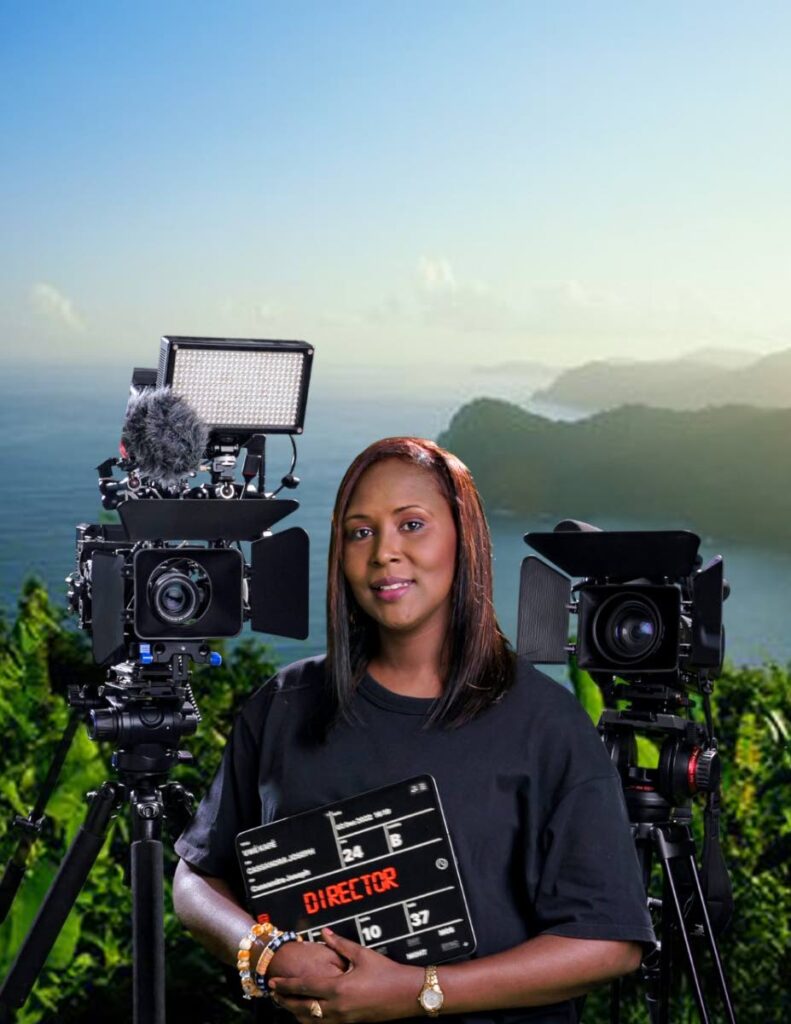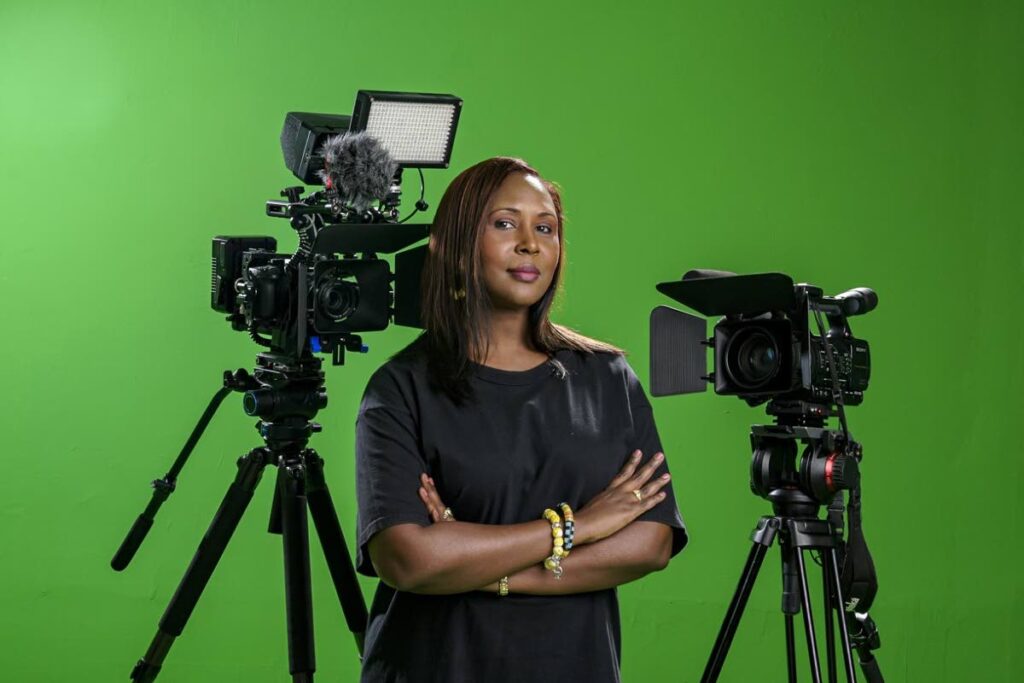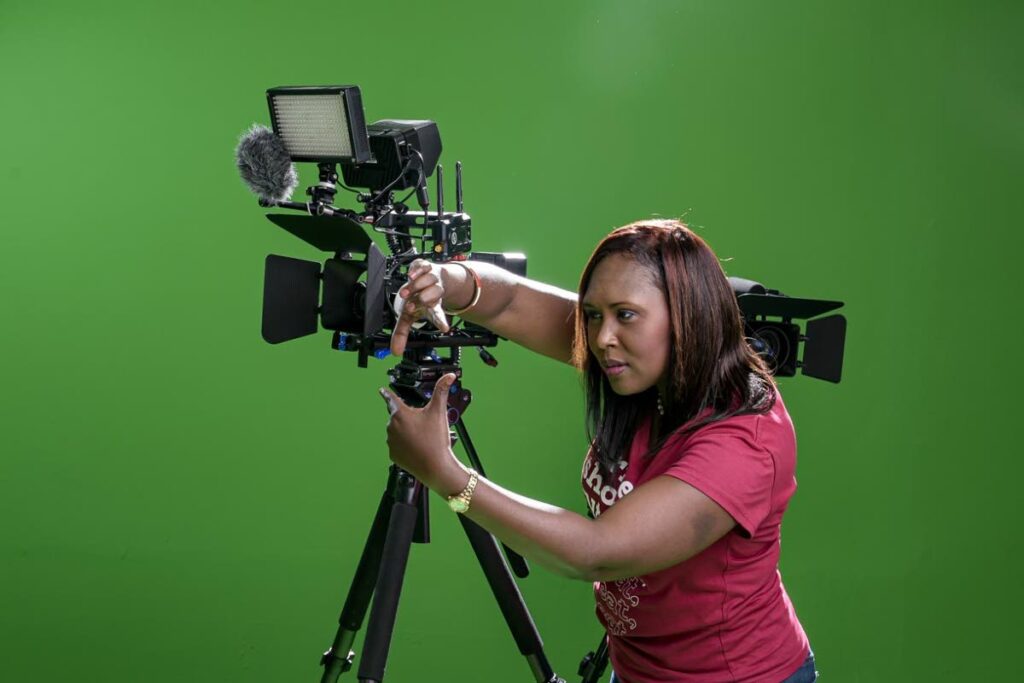Filmmaker Cassandra Joseph tells Paramin's stories in patois

Cassandra Joseph has found her work/life balance in something that had been right in front her her whole life – telling the stories of her life in the language of her subconscious – patois.
Born and raised in Paramin, Joseph creates documentary shorts of some of the traditions of the village. The films are done in French Creole with English sub-titles.
“I like that genre (documentary shorts). I like to see and hear people’s stories and I love shows that are based on true stories. I think it’s a way of finding common ground.”
She started making these documentaries in 2012, and over the years her films have been screened at the TT Film Festival; the Piton International Film Festival (PIFF), St Lucia; the 1261 Grenada Film Festival; and this year at the San Antonio Black International Film Festival (SABIFF), Texas.
She was able to attend the 2022 SABIFF in-person screening of her latest film, Vwe Kafe (Real Coffee).
“I saw an ad on local TV about the SABIFF. I submitted my info and my film was chosen to be screened,” Joseph told WMN.
“It was an amazing experience to have your work not only appreciated in the region, but internationally.”
While in the US, she also met with and was interviewed by founder and president of PIFF, Ed Umoja Herman.
Vwe Kafe documents the coffee-making process exactly as it is done in Paramin, and just as she has seen her late grandfather doing it.

Her other documentaries include Broom Maker, Boukanem (The Art of Smoking Meat); Mayok (Bitter Cassava); and Septant Lanne Ansanm (70 Years Together), all of which she has written, directed and produced.
“All the films, except Broom Maker are in patois. Broom Maker was my first film and is about the process of making the brooms… I wasn’t used to seeing plastic brooms in Paramin, so when I’d go by friends I’d ask myself, ‘why do we have ugly brooms?’ Then I realised it was tradition and I now understand that it has a creole background, because I’ve seen the same type in St Lucia and Martinique.”
Now, she said, only a few people still make the brooms.
Her second documentary, Septant Lanne Ansanm is a love story – a celebration of her grandparents’ 70th anniversary. It was filmed in 2016 and screened at the 2017 TTFF.
“It was the first local foreign-language film to be included in the festival.”
At approximately 2,200 feet high, the view from Paramin is breathtaking and well worth the drive up the steep, winding road.
“I live seven corners up,” Joseph said with a laugh. “I don’t think it’s that high.”
Joseph attended school in Port of Spain and often wondered why the children and teachers spoke a “different language.” Because although she didn’t speak fluent patois, it was a language she grew up hearing.

“It was always in my subconscious but I didn’t think it would be something I would pursue when I got older.”
When she did decide to learn the language at the Centre for Language Learning at the UWI, it was much to the amusement of her grandfather.
“He literally laughed at me because I had grown up hearing patois, now to have to go and pay to learn to speak it.”
At UWI she met researcher, writer and foreign language teacher Nnamdi Hodge, with whom she collaborated on Septant Lanne Ansanm.
“These documentaries came about because of the way in which we do things differently in Paramin. We still have cocoa and coffee estates and my grandfather, when he was alive, made coffee. Granny still makes cassava flour. I started taking pics and writing about it, but then that became too much of a challenge, so I just started to do videos. Eventually I got professional input. The intent was to preserve the culture and document it for family.”
She said there was a time when Paramin would only be mentioned in the media at Christmas time for the annual parang festival, and at Carnival time the Paramin blue devils would get “two lines in the paper” with a lot of photos.
“Things are different now with social media, and Paramin is now a tourist attraction. But what I want to do is document our whole way of life.”
She said in order for her work to be screened at festivals she can’t use it on social media.
“So far it is only being used for educational purposes,” and has been used in classes at Alliance Francaise, UWI and the Lloyd Best Institute.
But her interest in history is not limited to documentaries. She has done a stamp booklet for TTPost – The Creole Harvest – which shows Creole estate workers on a plantation as they celebrate the harvesting of the fruit. The captions are in English and French Creole. She is also a lifetime member of the National Trust, an organisation dedicated to the preservation of built and natural heritage.
But, she said, one of her most memorable historical encounters was when she actually stood at the Door of no Return on Goree Island, at the Cape Coast Castle in Senegal – the door through which millions of Africans were forced onto slave ships bound for the US.
“I went to Kenya for work-related purposes and I decided to visit Senegal. I had recalled seeing a photo of former US president Barack Obama standing at the Door of no Return – the entrance to the transatlantic slave journey. He seemed to be pondering, and I told myself, ‘I’d like to go there because I love culture and history…I literally walked through the door and stood there. It was small with no wiggle room. It was surreal.”
The castle was built by the Dutch and now serves as a museum. It is estimated that 20 million Africans passed through the island between the mid-1500s and the mid-1800s.
“I wore my traditional Creole wear while there and the people of Goree Island recognised the cloth as being from Martinique because of the French Creole culture’s African and European mix.”
She said just as in other parts of the world, the village of Paramin and its people are steeped in history, culture and tradition, all of which she wants to feature.
“I plan to do a lot more documentaries because there are so many more stories to be told.”


Comments
"Filmmaker Cassandra Joseph tells Paramin’s stories in patois"